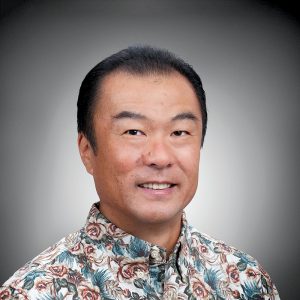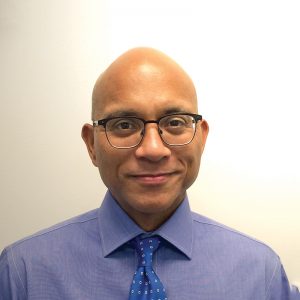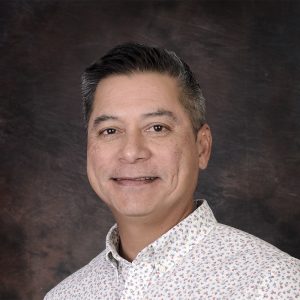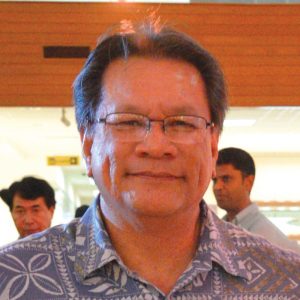By John I. Borja
From loans and interest rates to customer retention, top executives in the local banking and financing industry unanimously agree that the market is moving upward, even as several challenges on the local, national and international levels surface.
Guam Business Magazine reached out to these executives for their insight on the industry along with the growth their respective companies. Their responses analyze the trends of lending and buying in the community and provide a glimpse of what is to come for the industry and its markets.
Participants include Phillip J. Flores, president and CEO of BankPacific, a locally established company; Clarke S. Schaumann, CEO of ANZ Guam Inc., a subsidiary of the Australia and New Zealand Banking Group Ltd.; John Z. Arroyo, president of the Bank of Saipan; Gerard A. Cruz, president and CEO of Community First Federal Credit Union; Mark H. Tokito, senior vice president and manager of Bank of Hawaii’s Guam Commercial Banking Center; and Frank P. Camacho, executive vice president and chief operations officer of Personal Finance Center, a local financing company.

Mark H. Tokito
GB: What do you think of the overall state of the local banking and financing industry?
Flores: We all have strong capital ratios and good liquidity.
Schaumann: There’s really good competition. The banks here offer a wide set of services that makes the industry viable. The connection I see between banks and the business community is pretty amicable, which leads to better understanding, relationships and funding of projects.
Arroyo: I think [the Northern Mariana Islands] is pretty healthy and robust given the size of its population. Aside from Bank of Saipan, there’s the Hawaii banks, Bank of Guam and Citi Trust Bank, so the industry provides folks the option to choose. It keeps everyone honest and on our toes. Overall, we’re holding our own at this point. Saipan’s economy is doing much better than it did years ago, and that’s because the casino is bringing tourism and investments to the island.
Cruz: We’ve experienced strong deposit growth year over year mostly from off-island accounts as members continue to consolidate their relationship with us.
Tokito: We see good long-term prospects especially with the incoming military buildup. It’s something that everybody’s been waiting for. In the short-term, there’s some headwinds and challenges. The H-2B worker situation is hampering the economy. We’ve gotten good progress because of the court ruling here but we see that the process still hasn’t corrected itself fully.
Camacho: I look at what’s been happening in recent years and we’ve seen a lot of financial institutions putting substantial investments into their facilities, training and technology. I see that as a sign of a commitment to the future that the financial industry as a whole continues to build in anticipation of future growth. We’re a small local company so our market is limited to Guam. As economic conditions improve or deteriorate, that always presents a challenge for us and we have to be able to adapt quickly and be proactive.

Gerard R. Cruz
Can you provide an overview of your workforce and trends in your service activity?
Flores: The delivery of services has changed so radically in the past 15 to 20 years. We probably have three to four times more customers today than we did back then, but at the same time, we probably have about a third of the number of people in the lobby than we used to. Banking nowadays is done mainly online or on the phone and most companies will have direct deposit. The increase in customers has grown without really having to increase the workforce because of the new technologies that have reshaped the banking industry.
Schaumann: We’re realigning ourselves to a target customer segment. We’re not going to be all things to all people here; you’re only going to see us where our customers are. Instead of customers coming to our office, we want to be in our customer’s office. Our initiatives will be based upon freeing up all of our people’s time so that we can focus our efforts on being out in the market.
Arroyo: We’re pretty much a full-service bank and our workforce is expanding. We’re looking at growing banks and services that will increase the touch points for our customers to get access to funds and services. We’re the first local chartered bank and we’ve been here for almost 40 years. Being a local bank, our main focus is making sure that the CNMI is our main and only focus.
Cruz: Our numbers are in line with our budget goals and consistent with our long-term strategy of steady performance. Our workforce has grown consistently with our business model. This year we’ve opened our newest service center in Mangilao. It is a full service center that is operated primarily by college students. It is the first of its kind on Guam. This is a different kind of service center. It remains full service and offers all of what you’d expect if you walked into any of our other centers, but its secondary focus is on the development of our qualitative goals, which include product and service development and succession planning.
Tokito: Generally, we’ve gone from a number of branches to only two branches here. What’s driving that are our mobile banking capabilities. Online banking and digital banking are a national trend. We also recently announced our plan to build a new headquarters in the Tamuning area. Our two outer markets, Saipan and Palau, have been pretty steady. Saipan has been challenging for a number of years because their economy isn’t strong, but we saw an uptick last year, probably because of the money flow from the casino.
Camacho: The trend recently has been a modest increase in our overall business. We’re a finance company, apart from the traditional banks and credit unions. We’re different because companies like ours are regulated by the government of Guam whereas the banks have the Federal Deposit Insurance Corp. and credit unions have the National Credit Union Administration. However, we offer a lot of the products and services that you see at those institutions, except accounts. Our money certificates are also very popular among our customers.

Clarke S. Schaumann
GB: What’s the status on interest rates?
Flores: Interest rates have been going up for the last two years, but technically they are still pretty low. This is coming from someone who’s been in the industry for quite a while. I’ve seen mortgage rates at 17% dropping down to where it is now [hovering around 5%].
Schaumann: ANZ Guam is a U.S. subsidiary, so we’re very much within the U.S. banking system and therefore we’re connected to the Federal Reserve banking system. We follow the federal funds rate. Compared to New Zealand, I’d say New Zealand interest rates are higher and they are more impacted by the world economy whereas the United States is more of an agenda maker.
Arroyo: There’s definitely a rise. Our rates are pretty close to rates nationwide, and they affect our lending and saving products. It’s a matter of making adjustments as needed to adapt to those rates.
Cruz: Interest rates are trending up nationally and therefore, locally as well. How each institution translates this trend into an end loan or deposit rate for the consumer is a function of several internal factors. But overall, we are squarely in a period of time where we need to expect rates to rise further before we start seeing some contraction.
Tokito: In the last couple of years, trends have seen an increase in rates. The Fed increased their rates three times in 2018 with expectations that there will be an additional three increases next year. A rising interest rate does two things: increases cost of borrowing and increases what is earned on your savings. If you’re a net borrower, it will cost more. If you’re a net saver, it will help you on your interest income side.
Camacho: Finance companies don’t compete with banks when it comes to interest rates on the loans side. As a finance company we’re in a market where we’re able to take additional risk. You tend to see higher interest rates on loans with finance companies to mitigate additional risks.

Phillip J. Flores
GB: How do you determine the likelihood of a small business proposal being successful in the current economic climate?
Flores: We’re in the business of trying to give you money so you can make a living, hire and add to the economy and community. But if we don’t think the economy is doing well, we’re not going to go take higher risk investments. [For start-up businesses] we’re going to ask a lot of questions to prove to us that you can do it. Existing businesses looking for a loan to expand are a lot more fun to work with because they already have a vision of where they want to go.
Schaumann: We have 10 lending principles, with the first four being the most important. There’s character — we only bank with people we can trust and who can trust us. We also look at the financial capacity of a person, and whether or not they can pay back the loan. The third one is collateral, and that gives us comfort when providing a loan. Finally, there’s credit policy. What is their credit like and does it work with us? If a customer meets all of these principles, it’s a great indicator they’re going to get the loan.
Arroyo: A lot of it just depends on the type of business and who’s making the request. We take a look at how long they’ve been in the community and what their reputation is. We tend to stay away from restaurants and bars because those are high-risk businesses.
Cruz: Small business is one of our key market targets. Our approach is focused on industries that we understand and businesses we feel make a good fit for us in terms of need and expectation. In that niche space, we’ve seen a moderate rise in requests in terms of volume and dollar amounts. We think that, in general, entrepreneurs always see opportunity. And opportunity can come in several forms, such as restructuring balance sheet composition or from investment into the business. We view our role as assisting in the execution of their plan.
Tokito: It really comes down to the management. It’s hard to start a business without some upfront capital.
Camacho: Take a look at the business plan. Being around for more than 40 years, we know the market very well. I think we have the ability to really understand the customers when they’re applying for loans. This requires flexibility on our part, so we must always have an open communication with customers to figure out how we can work with them through their financial difficulties.

Frank P. Camacho
GB: What type of loan request is your institution seeing more often recently?
Flores: There’s a lot, but the only thing that’s not growing right now is construction loans. There aren’t enough workers so construction is slowing down. Automobile loans are growing a little slower, but there’s great growth in that industry overall. Home loans, [veterans] loans and commercial loans are our backbone.
Schaumann: Contractors are starting to invest again. We’re seeing more housing developments come online so that’s really positive. It will relieve some of the perceived dearth in housing surplus. We’re seeing people come in with great development ideas, and we love seeing developers that have a proven track record.
Arroyo: What we do most out here are consumer loans — a lot of automobile loans. There’s a large percentage of home loans. But with residential and mortgage loans, the NMI has land alienation laws that strain the economic potential of the islands. On the commercial side, there are some deals but they’re far and in-between. What I’m mostly seeing come in are established business looking to get newer equipment or expanding.
Cruz: On the business side, we’re seeing loans to support consolidations and to some degree, expansions by way of replacing or investing better equipment. The real estate side has a very active purchase market, notwithstanding the fact that real estate prices have been going up, at least in the last 24 months. We’re seeing non-owner occupied types of purchases meaning investors are looking at one to four family residents for rental purposes. These purchases are typically happening north of the Micronesia Mall. In central Guam, we see owner occupied-type activities in the purchase market. There are just too many uses for our personal loans, but I can say loans for medical and emergency reasons are up there.
Tokito: In the last 10 years I’ve seen an uptick on entrepreneurs wanting to take advantage of the military buildup, like being a subcontractor. But across the board, there has been a variety of loans, especially new restaurants and retail stores.
Camacho: Personal loans are our bread and butter, ranging from $1,000 to $25,000. The last part of the year is considered our peak season because we see a lot of holiday loans, whether it’s for purchasing a car or going on vacation. Home equity loans have been popular with our customers too. It’s a niche market where a lot of homeowners have the ability to obtain a second mortgage to do debt consolidations and home improvements. We’re confident that we can grow the small business market as well.

John Z. Arroyo
GB: Are there any trends or new features you see elsewhere that you’d like to see locally?
Flores: The smartphone is much smarter in places like Europe or in Asia. Features like Apple Pay, for example, are a lot more common outside of America. There’s a lot more things we can be doing with our devices.
Schaumann: Peer-to-peer payments. If I wanted to pay you, I’d just tap my phone with your phone. The most ubiquitous place I’ve seen this is in China. No longer are individuals paying each other with cash or check, they’re using their phones to pay each other.
Arroyo: I often hear the buzzword “fintech” (financial technology) in the off-island seminars I go to. We don’t see it as often here as in the states, but it has that potential to disrupt traditional banking. Banks that have depth of a customer base and depth of product can merge with high-tech companies that are quicker, faster and can deliver these types of products far less expensively than a typical bank would. We utilize mobile banking here, but we’re totally revamping the platform. We’re looking at putting out a new product before the end of the year, and it will be more robust and more interactive.
Tokito: Much of the technology is already here. If you talk to people from other countries, they’ll tend to talk about U.S. banking versus European or Asian banking. In the last five years we’ve definitely seen a growth in online and mobile banking. We have our cardless cash mobile banking feature where you can just pay an establishment with your phone. We also offer mobile deposits where you can just take a photo of your check to make a deposit instead of going to the bank. The online technology is very fast-moving.
Camacho: Online lenders are up and coming. We see this in the big national companies, where people can get up to a $50,000 personal loan online. That’s something that could really change the landscape of lending as we know it.
GB: How does your institution maintain customer satisfaction?
Flores: We emphasize adding value to the experience and working with customers. At the end of our monthly staff meetings we ask the question, ‘What’s your best fashion apparel?’ The answer is a smile. Customer service reflects the overall well-being of the employees in the company, too. At least 50% to 60% of our workforce has been here for more than 10 years.
Schaumann: We’re a proud preferred lender of the Small Business Administration. We’re also the only AA-rated bank on Guam. This emphasizes trust, safety and security in our environment. We strive to adapt to our customers, instead of them adapting to us.
Arroyo: Bank of Saipan has an environment that permeates throughout the institution and out to the customers. This probably is the most relaxed and friendliest environment I have experienced so far. One compliment that I get from a lot of customer is on our customer service and how much our staff goes out of their way to help. It’s hard not to treat people in the best way we can when we’re closely related to them.
Cruz: One member at a time.
Tokito: Our goal is to have our branches be more consultative than transactional. We still have a lot of customers who would prefer to stand in line and talk to someone. We do surveys so we can listen to our customers’ needs. Like any other industry, we need to evolve to appeal to the customers.
Camacho: Being a small local company, we are able to anticipate the changes and have the flexibility to adjust to those changes in the economy. Through the years we’ve seen a lot of big banking companies leave the island, and for me it’s a positive thing to see that we’ve endured. Controlled steady growth is healthy and it adds to our longevity. Every year we’re always looking into ways we can improve our companies whether it’s improving our systems or training our staff.
















